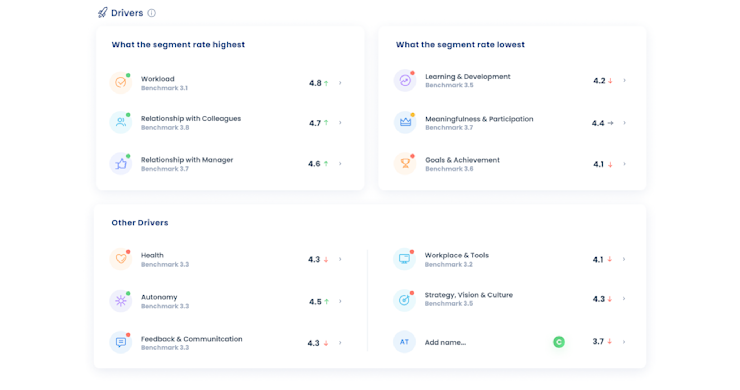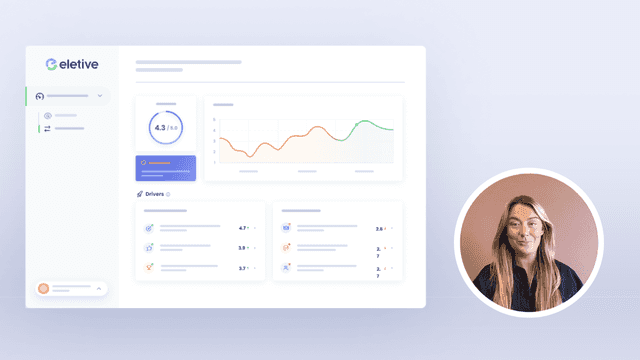Employee turnover is an important metric to consider when evaluating the performance and health of a business. Calculating the turnover rate of employees can help identify areas of improvement and issues that are causing employees to leave.
In this article, we’ll discuss what employee turnover is, why it’s important to measure, how to calculate the cost of employee turnover, strategies for reducing employee turnover, and best practices for managing employee turnover.
What is employee turnover?
Employee turnover is a measure of how many employees leave an organisation in a given period of time. The most common time frame is to measure annual turnover.
Employee turnover is expressed as a percentage or rate and is used to track the number of employees that have left a company over a certain period of time. Employee turnover is an important metric for businesses to track, as a high turnover rate can reveal underlying issues in the workplace that may be causing employees to leave.
Discover how to reduce employee turnover by boosting engagement in our brief, five-minute overview. Watch it below.

Employee turnover calculation
Measuring employee turnover is a simple process. To calculate the rate of turnover, divide the number of employees who left the organisation in a given period of time by the average number of employees at the organisation in that period. This will give you the rate of turnover for that period.
It is important to note that the rate of turnover can vary significantly from one period to the next. For example, if your organisation experiences a period of rapid growth, the rate of turnover may be lower than normal. On the other hand, if the organization experiences a period of downsizing, the rate of turnover may be higher than normal.
It's important to make a distinction between total turnover and unwanted turnover.
Recommended reading: What is regretted attrition - and how can HR reduce it?
The employee turnover formula
The formula for calculating employee turnover rate is:
(Number of employees who leave during a given period / Average number of total employees) x 100
This formula will give you the employee turnover rate as a percentage.
Why is it important to calculate the employee turnover rate?
Calculating the staff turnover rate is crucial. It helps employers understand the rate at which their employees are leaving the organisation, and identify trends as this metric changes. A high staff turnover rate is very costly, as it often leads to a decrease in productivity, an increase in recruitment and training costs, and a decrease in employee morale.
Losing top performers is even costlier, and high turnover can also undermine the general moral in the organisation. It is important for businesses to identify the root causes of employee turnover and take steps to address them in order to reduce turnover and improve employee retention.
Reasons for employee turnover
There can be many reasons why employees may decide to leave a company. These include poor company culture, low job satisfaction, lack of career progression, low pay, poor management, too much stress, and limited opportunities for growth and development.
It’s important for businesses to identify the reasons for employee turnover so that they can take steps to address these issues and reduce the rate of employee turnover.

Calculating the cost of employee turnover
The cost of employee turnover refers to the costs associated with recruiting and training new employees to replace those that have left. To calculate the cost of employee turnover, you need to take into account factors such as salary costs, recruitment costs, replacement costs, and training costs.
You should also consider the cost of lost productivity. This includes the time it takes to find and train a new employee, as well as the time it takes for the new employee to become fully productive. Additionally, the cost of lost productivity can include the cost of lost customers due to a lack of experienced employees. Calculating the cost of employee turnover can help companies identify areas where they can reduce costs and improve efficiency.
Strategies for reducing employee turnover
Reducing employee turnover is essential for businesses to remain competitive and profitable. There are a number of strategies that businesses can use to reduce employee turnover. These include offering competitive salary and benefit packages, providing job satisfaction, investing in training and development opportunities, promoting flexibility and work-life balance, and creating a positive company culture.
In addition to these strategies, businesses should also focus on building strong relationships with their employees. This can be done by providing regular feedback and recognition, encouraging open communication, and creating a sense of community within the workplace.

Eletive's intelligent employee surveys allows you to measure all aspects of the employee experience in realtime.
Regular employee pulse surveys is a powerful tool for reducing staff turnover. They provide valuable insights into how the people in your organisation experience their work, and where there may be areas that can be improved.
Recommended reading: The drivers of employee engagement - and how to measure them
The importance of tracking employee turnover
Tracking employee turnover is important for businesses because it helps them identify areas where improvements need to be made in order to retain employees. Tracking employee turnover also helps companies understand how their recruitment and training strategies are performing and identify areas where they could be more efficient. By understanding their current rate of employee turnover, businesses can develop strategies to reduce it.
In addition, understanding employee turnover can help businesses identify potential issues with their recruitment process. By understanding why employees are leaving, businesses can make changes to their recruitment process to ensure they are hiring the right people for the job.
In the Eletive platform you can find the feature Attrition Risk that can anticipate attrition and help HR take preventive actions to reduce employee turnover. Address issues leading to dissatisfaction among your employees and take relevant action to increase employee engagement.
How to use employee turnover data to make decisions
Employee turnover data can be used to inform decisions related to recruitment, training, compensation, and other areas. By analysing historical data and making comparisons between departments or teams, you can identify patterns in their workforce that may suggest areas for improvement. This analysis can then be used to drive decisions related to hiring, training, compensation, and other areas.
Best practices for managing employee turnover
To effectively manage employee turnover, businesses should focus on creating an engaging work environment where employees feel supported and valued. Companies should also ensure that they are providing competitive compensation and benefits packages, as well as offering opportunities for professional growth and development. Businesses should strive to provide clear communication between management and employees to ensure that expectations are met on both sides.
Related reading: How to reduce employee turnover and sick leave

























